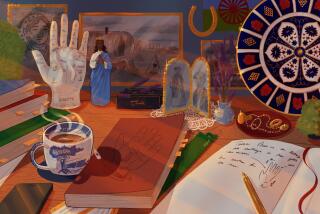A Tiny Fortune Teller
- Share via
Tension filled the crowded living room as a woman picked up her 8-month-old son, Levon, set him on a table and covered his head with a scarf, hiding his eyes. Then she threw wheat over him and removed the scarf. Quizzically, the baby looked at numerous objects placed in front of him, including a container of pills, a cross, a book and a $20 bill. When he reached over and picked up the money, everyone cheered.
What did it mean?
Levon was participating in a centuries-old Armenian tradition called agra hadig. In Armenian, agra means tooth and hadig refers to wheat, traditionally prepared with sugar and cinnamon for this occasion. When a baby’s first tooth appears, Armenians have a party where the baby predicts its own future according to an object it selects. Levon’s choice of money meant that he would become a successful businessman.
Choosing the book would have signified the life of a scholar; pills would have predicted his becoming a physician; the cross would have forecast a spiritual life. The mother’s throwing of wheat over Levon’s head was a wish for fruitfulness.
In addition to Armenians, other immigrants from Europe and Asia also have ceremonies where babies predict their futures, although the objects used and interpretations may vary. While Armenians use the first tooth as a signal to have the party, in most other cultures it takes place at age one.
More to Read
Sign up for Essential California
The most important California stories and recommendations in your inbox every morning.
You may occasionally receive promotional content from the Los Angeles Times.













